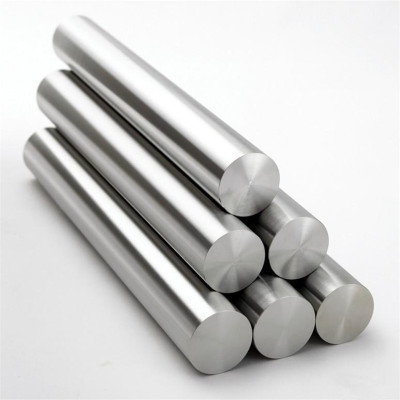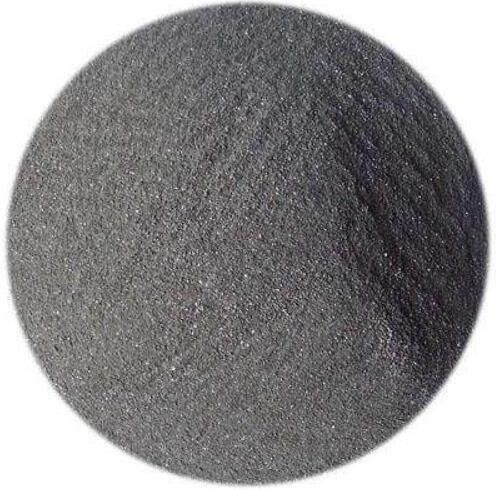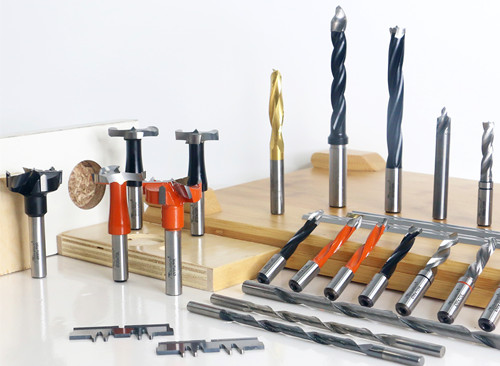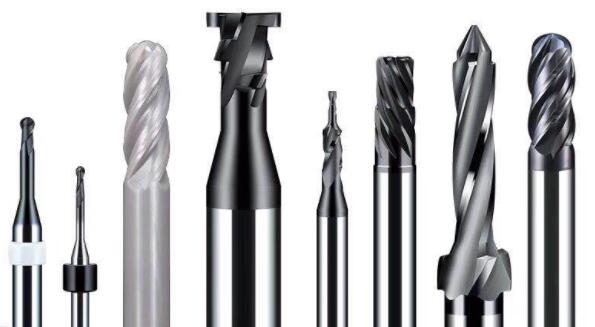Due to the rapid development of CNC machine tools, the application of tungsten carbide drills and high-speed steel drills has also received extensive attention, and the application of carbide drills has also been greatly developed. Many factories use tungsten steel drill bits as much as possible.
Today we will discuss the 3 main advantages of carbide drills compared with HSS drill?
1: Higher hardness
2: more wear-resistant, longer lifetime
3: Wider Application scale than HSS drill
Why it performs better than HSS drills?
● Firstly we will make comparison of the raw materials and characteristics of the two products:
The high alloy composition in the cemented carbide material makes the wear resistance and heat resistance much higher than that of high-speed steel
Raw materials and characteristics:
The main raw materials of cemented carbide drill bits are tungsten trioxide, tungsten powder, titanium trioxide, niobium powder or niobium pentoxide, cobalt oxide and carbon black. First, it is necessary to prepare tungsten carbide, titanium carbide, niobium carbide and metal cobalt powder from the above raw materials, and then prepare tungsten carbide and cobalt in the required ratio, and then add alcohol for ball milling. After ball milling, drying, sieving, adding forming agent, drying, smashing and sieving, the required mixture is obtained, of which tungsten carbide and cobalt account for up to 99%, and the remaining 1% is other metals. These materials are all refractory metals. Because refractory metal carbides have extremely high hardness, the alloy itself has high hardness.
The hardness of cemented carbide drill is generally between HRA86-93, and its hardness is second only to diamond, and it remains basically unchanged even at a temperature of 500℃. At 1000-1100℃, the hardness of cemented carbide is still 73 -76 which is equivalent to HB430-477.
The material of high-speed steel drill bit is a kind of alloy steel with complex composition, which contains carbide forming elements such as tungsten, molybdenum, chromium, vanadium, and cobalt. The total amount of alloying elements is about 10-25%, while the alloy content of cemented carbide drills is as high as 99%. This is the main reason why alloy drills are more wear-resistant than high-speed steel drills and have a longer service life. High-speed steel drills can maintain high hardness even when high heat is generated by high-speed cutting (about 500°C). The HRC can be around 60, while the hardness of the alloy can be maintained between HRA86-93 under high heat.
The wear resistance of cemented carbide is 15-20 times higher than the best high-speed steel. It plays a great role in metal cutting, especially when the tool wears in the continuous cutting of steel.
Because the main component of high-speed steel is carbon steel, compared to tungsten carbide, it is more likely to interact with air and water and thus is not resistant to corrosion and oxidation, cemented carbide has the characteristics of high wear resistance, high thermal hardness and more corrosion resistance.
2: Production process and technology difference:
In the production of carbide drills and high-speed steel, the process and process requirements are different, but the carbide drill bit technology and equipment requirements are higher, so as to ensure its high precision and stability.
●The production flow of carbidey drill bits is as follows:
Step 1: Make the the carbide rods
Bars are obtained from raw materials in powder state, and extrusion molding or die compression molding is used. Extrusion molding is a suitable way to produce long rods. It can be cut to any length desired by the user during the extrusion process. However, the overall length of the alloy rod cannot exceed 350mm. The other is compression molding, which is a suitable method for short bar production. As the name implies, the cemented carbide powder is pressed into a shape with a mold.

Step 2: Cut the fixed-length bar with flat ends on both ends.
According to the design of the diameter and total length of the drill bit, you can choose an alloy bar cutting machine or use a wire cutting device for fixed-length processing.
Step 3: Grinding and precision machining
3.1: Chamfer or perforate the polished end face of the alloy bar to prepare for grinding the outer diameter and shank of the drill.
3.2: It is necessary to process the outer diameter of the drill bit and the outer diameter of the shank on a high-precision cylindrical grinder to ensure the design requirements of outer diameter cylindricity, round runout, and surface finish.
3.3 In order to improve the processing efficiency on the CNC grinder, the drill tip can be chamfered before the alloy bar is placed on the CNC grinder, such as a 140° drill tip angle, which can be roughly ground to 142° when chamfering.
3.4: After the chamfered alloy bar is cleaned, it is transferred to the CNC grinder process, and all parts of the drill are processed on the five-axis CNC grinder.
3.5: If you need to improve the drill chip flute and outer circle finish, you need to use wool wheels and abrasives to grind and polish it
Step 4: For the drills that have been processed and qualified, laser marking is performed on them, and the content or information such as the company’s brand LOGO and drill specifications and dimensions.
Step 5: Coating if necessary.
The production process of high-speed steel drill bits:
Step 1: Heat treatment of high-speed steel blanks. During the heat treatment process, preheating is required. The preheating temperature is 500-600℃, and then heating and holding. The heating and holding time is 10-20 minutes, and then proceeding Quenching and tempering, the quenching temperature is 450-500℃;
Step 2: the rust treatment of the outer surface: the high-speed steel after cutting is placed in a pickling solution for pickling, and sulfuric acid, hydrofluoric acid, hydrogen peroxide and corrosion inhibitor are added to the pickling solution.
Step 3: Forging.
Forging the rough material that has undergone surface corrosion treatment. Manual forging and machine forging are required during forging. The artificial forging part requires artificial knocking of the rough material. After manual forging, mechanical forging is performed. Mechanical forging places the rough material in the forging press. Suppress in the machine;
Step 4: Cutting processing
The forged blank is placed on a lathe for processing, and the processing time is 10-30 minutes to form a rough piece of the drill.
Step 5: Grinding
Grinding is carried out after cutting. The grinding time is 15-25 minutes. When grinding, the drill bit blank is coated with grinding oil. The grinding oil includes polymer polymer. The addition amount of high molecular polymer is 1-5kg, the addition amount of grease glycol ester is 2-8kg, the antioxidant is 5-9kg, and the antioxidant is anti-oxidant, anti-oxidant and anti-oxidant. The rust agent is 1-5kg, and the antioxidant is 2-4kg.
However, due to the greater hardness of the tungsten carbide drill, and when high wear-resistant products are required in some specific industries, it has higher requirements on the process and equipment to ensure its quality. Such a high-precision drill can ensure the drilling quality of the hole, and there is no need for subsequent finishing after drilling.
It can process various materials, and the cuuting depth varies from 2mm diameter, 3mm diameter, 4 diameter to 5 mm diameter, which can be applied to cnc lathes and other rotary processing machine tools. Good chip control can be achieved for most workpiece materials, and the processed holes have good surface finish, high dimensional accuracy and positioning accuracy, and subsequent finishing is unnecessary.
Application: Carbide drills are known as “industrial teeth”. They are mainly used to drill through holes or blind holes in solid materials, and can ream existing holes. Our common alloy drills mainly include twist drills, flat drills, center drills, deep hole drills and nesting drills.
Their application is to drill hole in wood, cast iron, non-ferrous metals, plastics, chemical fibers, and glass, stone, etc. They can also be used to drill in difficult-to-process materials such as heat-resistant alloy, stainless steel, etc. This kind of drill bit is widely used in furniture manufacturing, military industry, aerospace, mechanical processing, metallurgy, oil drilling, mining tools, electronic communications, construction and other fields.
With the continuous development and progress of the industrial level, the pursuit of high-efficiency tools has not only increased and in the future, the manufacturing of high-tech equipment, advances in cutting-edge science and technology, and the rapid development of nuclear energy will greatly increase the demand for high-tech and high-quality and stable cemented carbide products.
The high-speed steel has a good combination of strength and toughness, so it is mainly used to manufacture complex thin-edged and impact-resistant metal cutting tools, as well as high-temperature bearings and cold extrusion dies. Due to the convenient sharpening of the tool, the sharpened blade can be processed into a fine cutting tool suitable for small cutting amount.
● Processing efficiency:
In actual processing and use, tungsten steel drills have a faster cutting speed and a long service life. High-speed steel drills are easy to wear and have a low service life. The linear speed of high-speed steel drill is 50m/min, and the speed of cemented carbide drill is 150m/min-300/min
●Summery
In terms of material hardness and wear resistance, the advantages of alloy drills are obvious. At the same time, in the range of use, alloy drills can be used in more than 50 different fields and materials, while the application range of high-speed steel drills is relatively smaller.
When drilling holes on CNC machine tools, if you want to improve production efficiency, you can choose high-quality alloy drills, whose excellent wear resistance and heat resistance can increase the service life, thereby reducing the cost of processing.
Post time: Mar-21-2021



